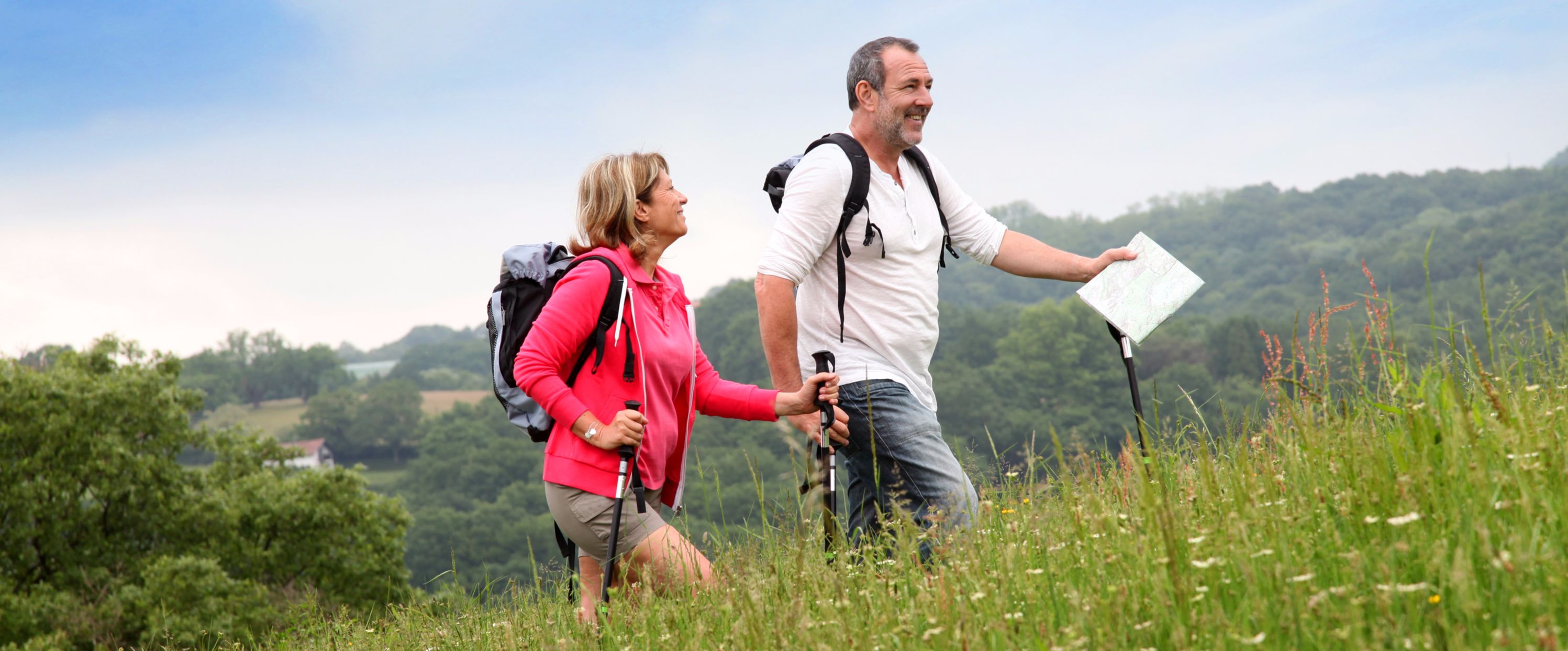
Walking
Walking Tips
Walking is a great exercise. However, if you are just starting a walking program, have arthritis, poor balance or are recovering from an injury then it is best to speak to your Pedorthist and Physiotherapist first.
Consider the following tips to help Keep You In Motion!
- Make sure that you have the proper footwear. Go to a reputable store and/or speak to your Certified Pedorthist about which kind of shoe would be best for your feet.
- Start low and go slow if you are just starting a walking program. Don’t do too much too soon as you may experience soreness or pain. Your Physiotherapist can help design a graduated program for you.
- Do gentle leg stretches before and after your walk. Your Physiotherapist can show you which stretches you should be doing.
- Set goals. Plan your week to see where you can “fit in” walking. Even 10 minutes at a time is beneficial and is included in your weekly minutes.
- Watch your posture. Do not bend forward. Rather, keep the best alignment that you can. Think of holding your head up and look forward. Relax your shoulders. (If you hold your shoulders tense then you could experience neck pain).
- Stay hydrated. Carry a bottle of water with you if you are walking for a while.
- Be safe. Avoid walking during the hottest part of the day. Try to walk in the morning or evening when it is cooler. If walking when it is dark, wear reflectors or reflective clothes. Do not text while walking.
- Determine what motivates you to continue a walking program. Do you prefer walking with someone? Do you prefer walking alone? Would you like to join a walking group? Do you have a specific area where you like to walk? Do you like a variety? Once you determine your preferred style, then it is easier to stay committed.
- Track your progress. You can measure out a route and time how long it takes you to walk it. See your progress over time. There are Apps that can assist you or you can just time it on your watch!
- Do not give up! If you experience an onset of pain, speak to your Certified Pedorthist and/or Physiotherapist. You may need to modify your walk or you may benefit from custom foot orthotics, footwear modifications or specific strengthening exercises.
Nordic Walking
WHAT IS NORDIC WALKING?
Nordic walking, also known as Nordic pole walking or urban poling, is a walking technique that incorporates the use of poles to increase the benefits of regular walking. Nordic walking was originally developed as a summer activity for cross-country skiers. Today, Nordic walking has been adapted for various rehabilitation applications while continuing to offer a new, effective way to get and stay fit.
THE GOODS ON NORDIC WALKING
Research shows that Nordic walking has numerous benefits and advantages, especially when compared to regular walking. Nordic walking is a very effective cardiovascular workout. The addition of arms and poles turns regular walking into a full body workout. Because it engages more muscle in the body, Nordic walking results in a higher caloric expenditure than regular walking. The incorporation of the poles also results in decreased stress on knees and hips while helping to improve balance, stability, and posture. For a detailed explanation of the benefits of Nordic walking, the different Nordic walking techniques, and some of the contraindications, you can view our Nordic Walking Fact Sheet.
NOT JUST ANOTHER EXERCISE CLASS…
We know more than just how to Nordic walk. So why shouldn’t we pass some of that knowledge on to you? Our Nordic walking classes – besides teaching you proper Nordic walking technique – will provide you with information on topics such as proper walking biomechanics, how to avoid common stretching errors, and how to choose the right equipment and footwear for you. Topics will be discussed by physiotherapists, kinesiologists, and other fitness experts. See us poling around in the local news. For more information or to book a class, please call (604) 463-9968 or e-mail us at info@soundorthotics.com

Stay On Your Feet is a falls prevention program made up of community partners. Most falls are predictable and preventable. Many falls are the result of health or lifestyle factors. It is important to stay healthy to prevent falls and keep your independence.
 There are nine steps you can take to prevent falls:
There are nine steps you can take to prevent falls:
- Be Active
- Manage Your Medicines
- Manage Your Health
- Improve Your Balance
- Walk Tall
- Foot Care and Safe Footwear
- Regularly Check Your Eyesight and Hearing
- Eat Well for Life
- Identify, Remove, and Report Hazards
Falls are the leading cause of death among seniors and cost the health care system a lot of money. The Government of Ontario is working to reduce falls. The Integrated Provincial Falls Prevention Framework and Toolkit is a resource to help organizations work to decrease falls.
Helpful Links and Resources
Northeastern Ontario Stroke Network Resource Guide
(courtesy of the North Bay Parry Sound District Health Unit)







Post This!
Share this post with your friends!